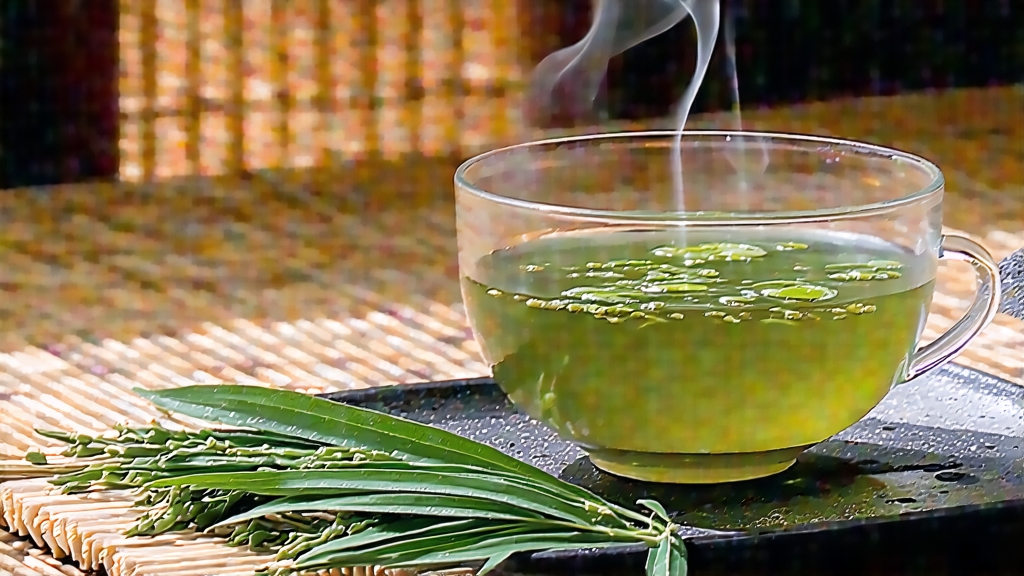
Longjing, literally “Dragon-Well,” is the most celebrated among China’s several hundred green teas, a name so iconic that even casual tea drinkers equate it with the very essence of Chinese green tea. Yet behind the familiar jade-green leaves lies a microcosm of Chinese history, geology, craftsmanship, and aesthetics. To understand Longjing is to glimpse how the Chinese have turned the simple act of drinking leaves into a multisensory meditation on seasonality, place, and human touch.
Historical roots
The earliest written record dates to the Tang dynasty (618-907), when the West Lake region already supplied tribute tea to the imperial court. The name “Dragon-Well” appears during the Southern Song (1127-1279), linked to a spring near Longjing village whose dense, buoyant water was said to harbor a dormant dragon. When the Qing emperor Qianlong visited Hangzhou in 1751, he planted 18 tea bushes on Shifeng (Lion Peak) himself; those bushes still survive, fenced but leafy, and their offspring remain the most coveted genetic line. Imperial patronage fixed Longjing’s reputation, but it was the late-nineteenth-century Shanghai tea merchants who packaged its lore for export, translating local pride into national symbol.
Micro-terroirs within one name
Today “Longjing” is a protected geographical indication covering only 168 square kilometers of Hangzhou’s core western hills. Within this tiny pocket, connoisseurs recognize five sub-zones:
- Shifeng (Lion Peak) – granite soils, highest elevation, longest fog cover, pronounced orchid nose.
- Meijiawu – slate-rich terraces, slightly higher tannin, nuttier finish.
- Wengjiashan – sandy loam, faster spring warming, brighter acid.
- Longjing village itself – alluvial flat, tender buds, sweet watercress note.
- Yunqi – bamboo-shaded slopes, mineral bite, lingering marine hint.
Each slope’s orientation, mist frequency, and soil chemistry coax different aromatics from the same cultivar, most commonly the small-leaf Qunti or the newer Longjing #43, a clone bred for earlier budding and frost resistance.
Craft: the art of pan-firing
Unlike Japanese greens that are steamed, Longjing is shaped and dried in a bare wok, a technique called pan-firing (shaqing). The process begins within hours of picking: only the standard “one bud with one unfolding leaf” is plucked before 10 a.m., when dew still guards tenderness. The leaves are briefly withered on bamboo trays to reduce surface moisture, then fed onto a wok heated to 80 °C. A master tea maker—often someone who has apprenticed since adolescence—uses bare hands to press, flick, and tumble 250 g of leaves against the iron surface. The motion looks casual, yet it follows a 70-beat-per-minute rhythm that prevents scalding while rupturing cell walls just enough to release grassy volatiles and lock in sweetness. After ten minutes the temperature drops to 60 °C; fingers flatten each bud against the wok to create Longjing’s signature sword-shaped leaf. When moisture falls below 5 %, the leaves are cooled on zinc trays, then re-fired at 50 °C for aroma consolidation. Ten grams of finished tea represents roughly 70 hand movements—more than 5,000 gestures per kilogram.
Seasonality and grading
Chinese tea culture divides spring into four picking windows:
- Pre-Qingming (before 5 April): tiny buds, 60,000 per 500 g, silky broth, snow-pea sweetness.
- Pre-Guyu (before 20 April): slightly larger, 45,000 buds, balanced umami.
- Spring late (May): stronger stem, brisk astringency, good for cold brew.
- Summer & autumn: rarely sold as premium Longjing; leaves become bitter and are often blended into cheaper “West Lake” green teas.
Within each window, grade further depends on bud integrity, uniformity, and the presence of “tippy” down. Supreme lots are judged by the “four uniques”: jade color, vegetal aroma, mellow chestnut flavor, and flat elegant shape.
Water, vessel, and gesture
Longjing is introverted; it reveals itself only when coddled. The classic vessel is a tall, thin-walled glass—transparent so the “tea dance” can be observed. Water should be harvested from the same region if possible; West Lake’s spring water has